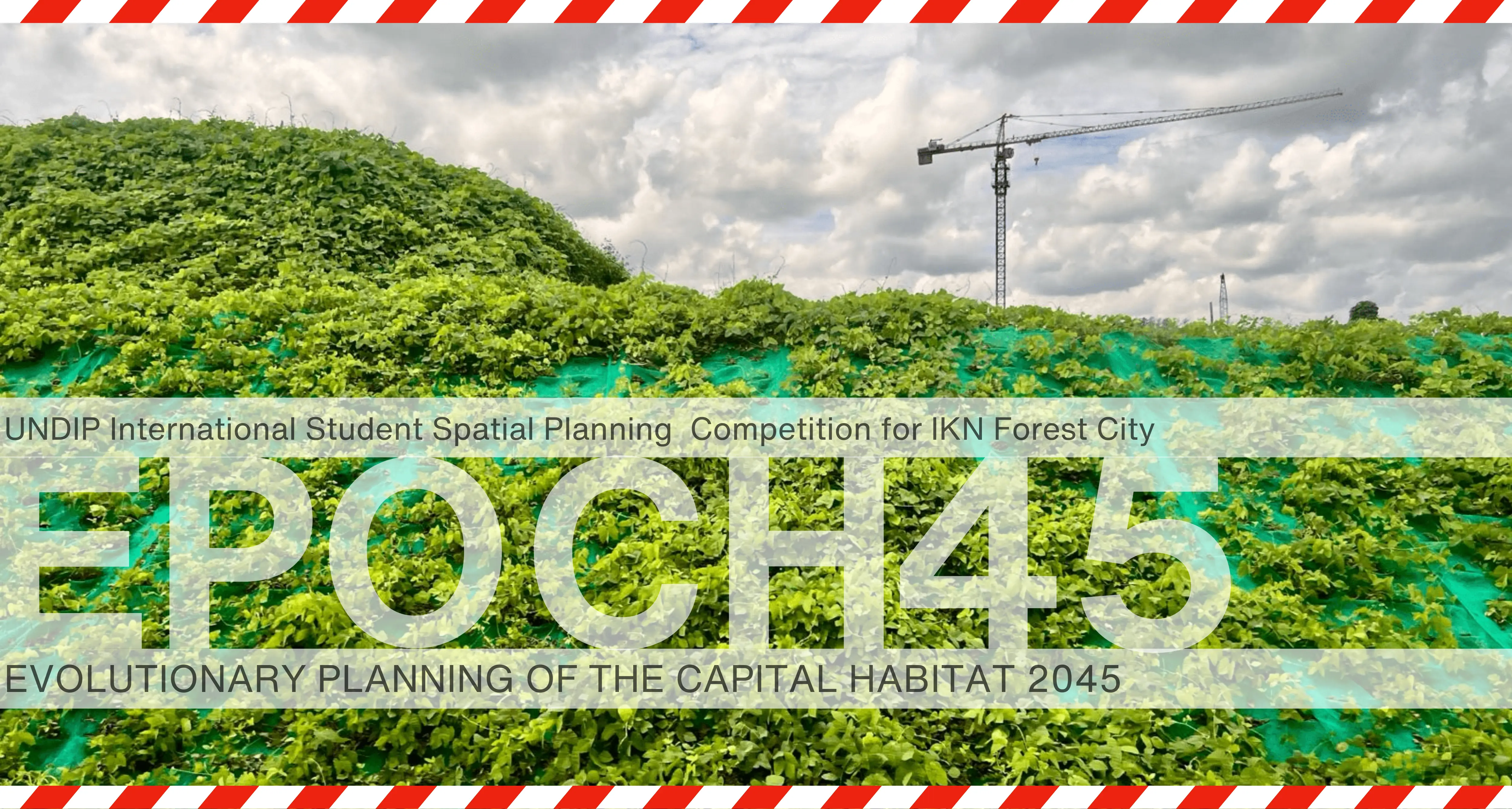

Evolutionary Planning Of The Capital Habitat 2045
UNDIP and MARS are excited to announce EPOCH45: a multidisciplinary student and young professionals spatial planning competition for the new capital city of Indonesia, Nusantara (IKN). EPOCH45 seeks urban and landscape solutions for the next phase of its development.
This open ideas competition acts as a catalyst for reimagining entrenched planning paradigms within the dynamic landscape of Kalimantan. EPOCH45 invites participants to explore the concepts of Evolutionary Planning and envision pathways of incremental development for Nusantara from an administrative core in 2025 to a self-reliant and resilient “Forest City” of 2 million people by 2045.
EPOCH45 is an initiative by UNDIP and MARS Architects, lead by Prof. Wiwandari Handayani, guest lecturer Dr. Neville Mars, with Dr. Rukuh Setiadi, and Hon. Prof. Dr. Bambang Susantono.




Region // District // Block
EPOCH45 seeks new strategies for the integrated development of IKN Capital City for the year 2045. Emphasis is on designing the expansion towards an inclusive “Forest City” — a landscape where jungle and metropolitan functions are symbiotic. The existing administrative core will need to expand in two stages from the current settlement to an urban constellation of 1 million by 2035, to a metropolitan region of 2 million people by 2045.
Spatial integration is critical to achieve a vibrant metro region that encompasses 70% diverse jungle by 2045, on what is currently an Acacia and palm oil plantation. The competition unfolds across 3 scales, and asks for: 1. a regional vision that lays out the infrastructural, economic, agricultural and ecological backbone of IKN, 2. town planning of one or more districts, indicating urban fabric, typologies, and transit systems, 3. articulation of the block and street level, including possible architectural impressions, which illustrate how regional and district plans work together and manifest at the scale of its inhabitants (see this figure).
These goals introduce many practical challenges such as walkability and inclusivity, but also opportunities for IKNs business case. For the two stages of its development, basic urban indicators (i.e. built footprint, GFA, FAR, land use, population density, walkability) and performance indicators should support the vision.
Ultimately, the proposal must reveal how it engages the landscape over time to achieve a self-sustaining, multifunctional region that unites urban, agricultural, and natural systems. In short, EPOCH45 asks: how can the human habitat and the natural habitat — City and Forest — be planned to become complementary?